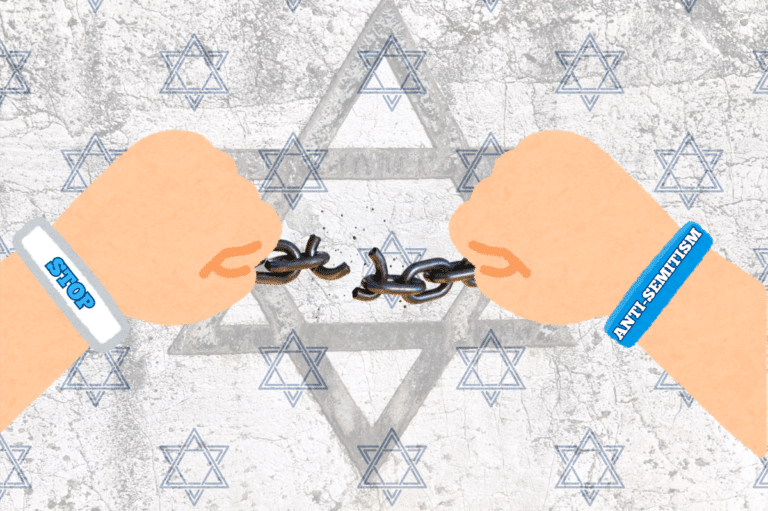
This article is part of Unpacked’s Gen Z Voices series, which highlights our readers’ experiences on campus or as recent graduates, cultural commentaries, and reflections on what it means to be Jewish today. Learn how to submit here.
In the familiar hallways of my high school, each corner, classroom, and corridor is a place where I’ve shared memories with friends, collaborated on projects, and engaged in learning. This environment has always been a sanctuary – a bubble of safety and acceptance where differences are celebrated, and everyone can express their identity without fear.
For Jewish students like me, this sense of security is paramount. It means wearing a Star of David daily, discussing Jewish holidays, and feeling part of a diverse community that respects and acknowledges each other’s heritage.
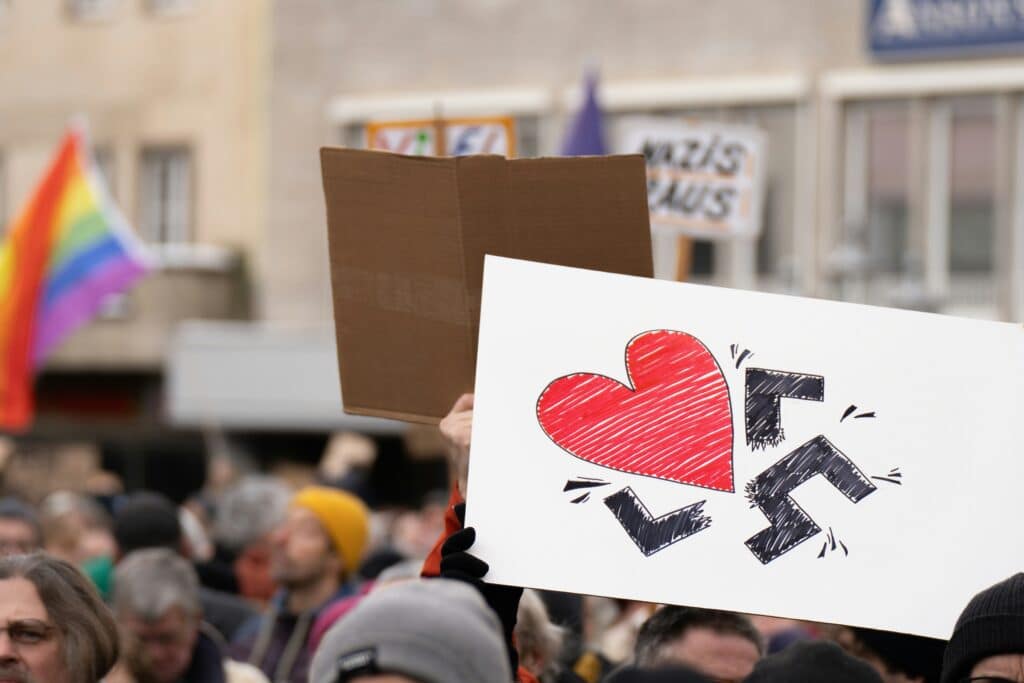
However, this sense of safety was shattered for me when a crudely drawn swastika was discovered on a bathroom wall. This was no simple act of vandalism; it was a targeted symbol of intimidation, hatred, and genocide aimed at one community simply for its existence.
In 2024, amid what should be an era of acceptance and understanding within educational environments, this anachronistic mark of death and destruction felt like a personal attack. It was a chilling reminder that this ancient hate is far from eradicated.
Since Oct. 7, antisemitism has skyrocketed, in schools and beyond
In the months after Oct. 7, there were 5,204 reported antisemitic incidents in the United States. According to the Anti-Defamation League, “In a reversal of past trends, younger Americans are more likely to endorse anti-Jewish tropes.”
This visible evidence of hate left me feeling unsettled and shocked. It was as if a hand gripped my heart, making breathing hard.
The faces of my friends and respected teachers now seemed unfamiliar, warped by the possibility that they might support the annihilation of Jews.
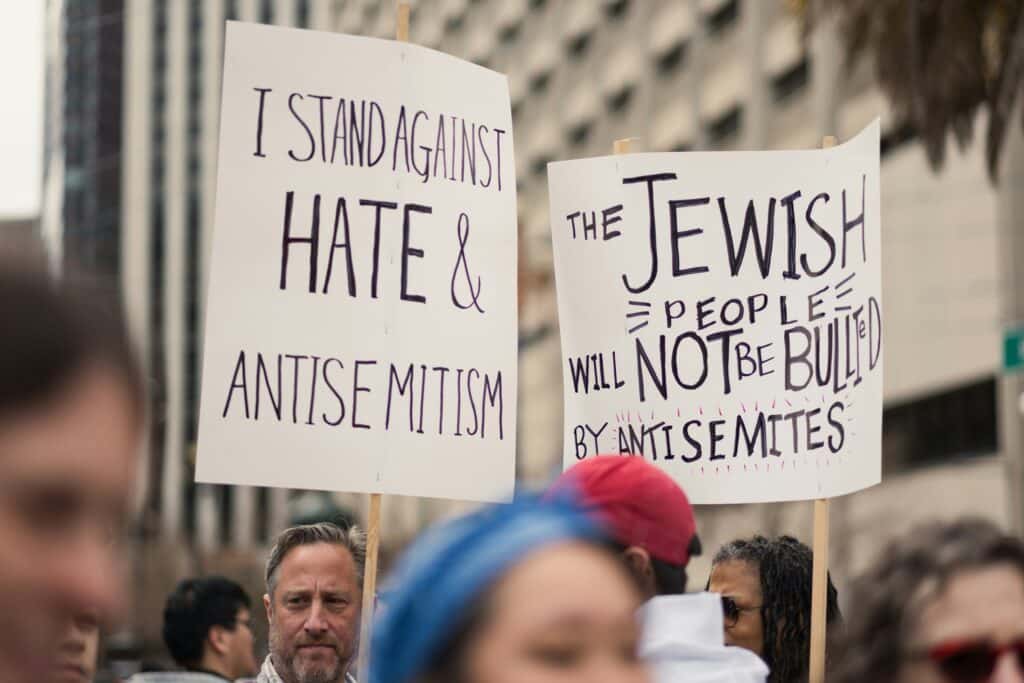
I quickly remembered my relatives who fled the Soviet Union and their struggles, the stories of oppression they shared with me. As the son of Soviet refugees who left their homes because of antisemitism, the resurgence of such bigotry was not just a news item; it was a call to action I couldn’t ignore. That swastika on the wall was more than just a symbol; it was a declaration that hate can find its way anywhere.
Read more: How does antisemitism affect Jewish Gen Z’s mental health?
Despite being half a world away from Gaza and far from the embattled college campuses, I was suddenly thrust into the center of this fight. No longer could I remain in the perceived safety of the backlines — I was now on the frontlines of the battle against antisemitism.
This moment solidified the grim reality that Jews across space and time have lived with: there are people around the world who want my people to die. This realization didn’t just inspire me to become an activist; it compelled me. It was no longer an option to stay silent; this sense of duty spurred me to take a stand in my school.
Advocacy begins at home
At my high school in Newton, Massachusetts, I began my advocacy in a small way. I distributed nearly 2,000 bracelets emblazoned with the message “Stop Anti-Semitism.”

While handing out bracelets in the crowded cafeteria, a classmate stopped me to ask what “antisemitism” meant. This highlighted a surprising gap in understanding among some of my peers and sparked a deeper conversation about the prevalence of antisemitism, both locally and globally.
The presence of these bracelets sparked conversations among students about how to best respond to antisemitic attacks. It gave many an opportunity to learn about how it currently and historically manifests.
Discussions ranged from the need for loud, immediate responses, such as classroom lessons about antisemitism, to a preference for a quiet, more personal approach, often driven by sadness or fear.
While these discussions brought issues of hatred and bias to the forefront and encouraged non-Jewish students to understand the extent of antisemitism and become allies, these conversations also revealed surprising gaps in understanding.
Some students were aware of the horrors of Oct. 7, while others were uninformed. It soon became apparent that some of my classmates didn’t know about the spike in local antisemitic attacks — which skyrocketed over 189% in Massachusetts last year — or even that they occurred within our community. Most startling, however, was that a few students were completely unaware of what antisemitism even was.
Education is critical in the fight against antisemitism
Seeing an opportunity to engage further and educate, I participated in discussions during our high school’s Jewish Voices panel. I shared my experiences and listened to others, helping foster an environment where we could openly discuss our challenges.
This event created a platform for Jewish students to share our experiences and educate our peers about our culture and history, regardless of religion. We discussed everything from daily challenges to personal stories of discrimination and resilience, opening up a dialogue about what it means to be Jewish today. One of my non-Jewish peers told me how eye-opening it was to hear our stories firsthand, expressing newfound empathy and commitment toward standing against hatred.
Recognizing the need for a deeper understanding of such prejudices’ historical and emotional impact, I organized a student field trip to the limited showing of Boston’s Auschwitz Exhibition. This wasn’t just a history lesson but an emotional journey for Jewish and non-Jewish students alike.
As we walked through the haunting displays that detailed the decimation of European Jewry, my peers and I grappled with the horrifying realities of the Holocaust. Students, some who knew little about the Holocaust, later recalled how the trip profoundly changed their perspective on the importance of combating all forms of hatred.
The importance of these educational initiatives cannot be overstated. They bridge the gap between ignorance and understanding. They serve not only to confront prejudice but also to celebrate the rich cultural heritage of the Jewish community.
The Jewish legacy is that of progress and advocacy
The Jewish legacy is filled with remarkable achievements across various fields. Albert Einstein‘s scientific theories reshaped our understanding of the universe, Ruth Bader Ginsburg‘s legal acumen pushed forward the frontiers of civil rights, and writers like Judy Blume have left a profound mark on our world by teaching readers to love themselves. These figures exemplify the resilience and creativity of our community — a legacy that other Jewish students and I are proud to inherit.
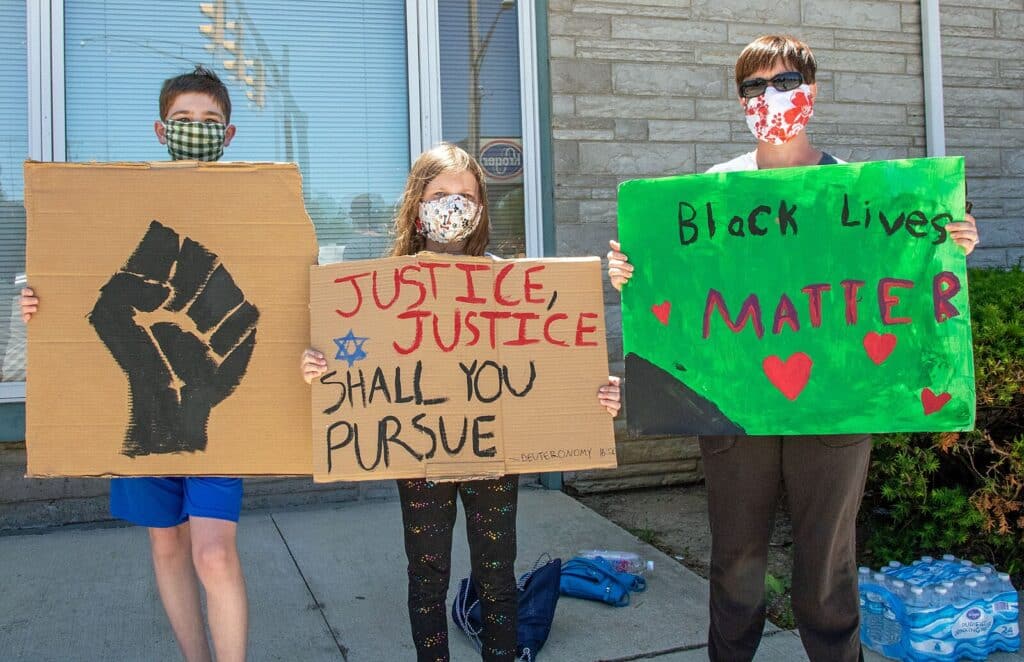
However, leading by example involves more than celebrating past achievements. It requires us to advocate for change in our communities.
Students have a unique role in this regard. Incidents of hatred that have become top news stories happen right before our eyes. We are not learning about these events from reports or secondhand accounts; we are firsthand witnesses. These immediate, personal experiences provide us with insight into the reality of antisemitism and equip us with the urgent motivation needed to address it.
How students can help in the fight against antisemitism
While my advocacy journey has not been long, I have learned several crucial lessons.
First, I realized that Jews need to forge alliances with other marginalized communities. Building bridges and fostering mutual support can create a united front against all forms of hatred.
Second, it is essential to educate others about the reality of the Israel-Hamas war, showing that Israel was not the aggressor and that Jews have always sought peace.
Finally, I learned the importance of resilience and persistence in the face of adversity. Advocacy is not a one-time effort but a continuous commitment to fighting for justice.
Organizing and participating in events promoting dialogue and understanding can inspire other minority groups to speak out and encourage those in our community to become allies. This collaborative, intersectional approach is crucial as it extends our impact beyond the Jewish community and helps create a more inclusive environment for all.
Moreover, our advocacy must also be reflected in our daily interactions. Each conversation we initiate, each story we share, and each myth we dispel can contribute to a broader understanding and respect for diversity.
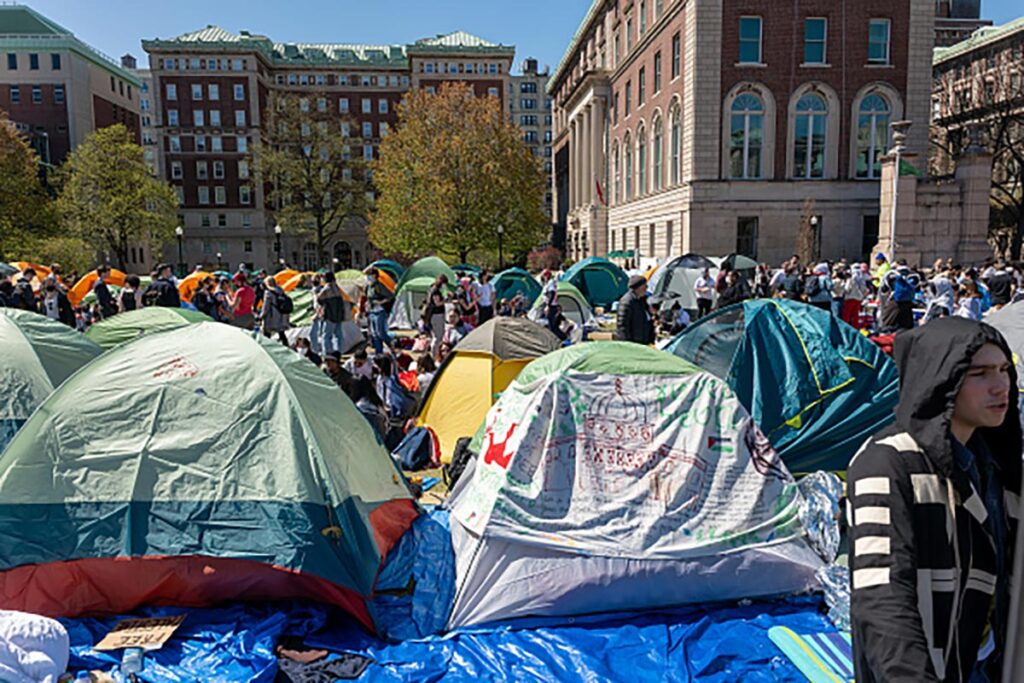
In the past year, I’ve interviewed over 100 immigrants from around the world, learning from their stories and the obstacles they’ve overcome in search of a better life. These conversations can have profound effects, gradually changing schools’ atmospheres from ignorance and suspicion to knowledge and mutual respect.
Our mission as students is clear: We must be the torchbearers of tolerance and the champions of change. This responsibility entails educating others about the perils of antisemitism and the value of diversity. It involves standing up to injustice wherever we see it, whether in the classroom, on the sports field, or on social media.
As I prepare to apply to college, I watch students protest the war in Gaza and threaten the safety of Jewish community members. I worry not only for my safety but for the safety of the tens of thousands of other Jewish students.
We cannot simply scream at one another; we must take the time to educate and have an open and meaningful dialogue. Fighting against antisemitism is not just about combating hate; it’s about building a future where respect, understanding, and appreciation for all cultures are the norm.
Instead of simply shouting and banging drums on the lawns of universities, let’s be the generation that boldly confronts the challenges of our time with wisdom and courage. Let us carry forward the legacy of our ancestors with pride and determination, ensuring that the lessons of the past illuminate the path to a more inclusive, respectful world. By doing so, we honor our heritage and contribute to a lasting legacy of peace and understanding for future generations.
Originally Published Aug 25, 2024 10:00AM EDT
